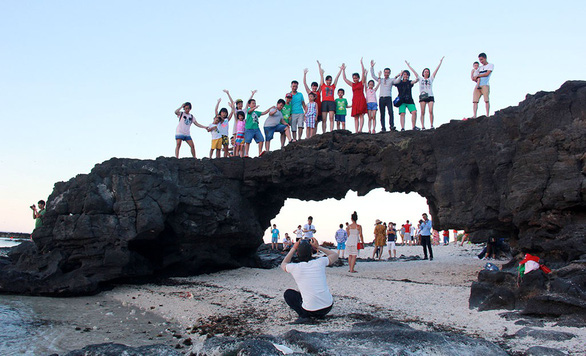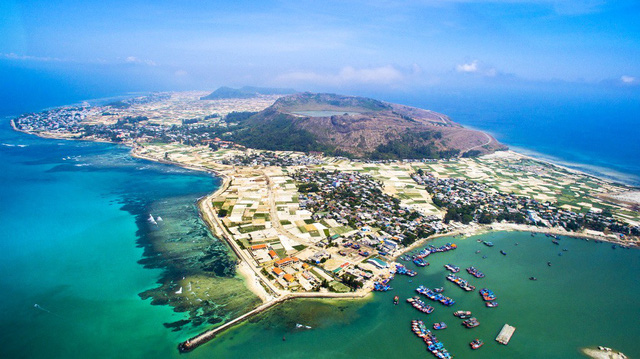The administration of Quang Ngai Province in central Vietnam is considering an entry fee for visitors to its popular Ly Son Island, with tickets costing up to VND50,000 (US$2.15) per person, to fund conservation efforts on the island.
The administrators have submitted two proposed fee options to the province’s decision-making People’s Council.
The first option is to require that visitors to Ly Son’s Dao Lon (Big Island) pay VND10,000 ($0.43) to enter each attraction on the island, whereas in the second option, visitors will pay a one-time entry fee of VND50,000 ($2.15) to enter the island, after which they are free to visit as many attractions as they like.
Popular places of interest on Big Island include Cau Cave, Hang Pagoda, To Vo Arch, and Thoi Loi Mountain.
For Ly Son’s Dao Be (Small Island), notable for its historical and cultural sites and museums, a one-time payment of VND20,000 ($0.86) per visitor is being considered, according to the proposition.
For both plans, children below the age of six, the disabled and those who are living on the island or traveling for work will be exempted from paying the fees. Meanwhile, children aged between six and 15, the elderly and students will enjoy a 50-percent discount.
Ly Son is administratively a district of Quang Ngai.
The proposal is expected to be debated at the upcoming meeting of the provincial People’s Council.
 |
| Tourists take a group photo on top of the To Vo Arch in Ly Son, Quang Ngai Province in central Vietnam. Photo: Tran Mai / Tuoi Tre |
The proposed entry fees are intended to help Ly Son fund its conservation efforts, local authorities said.
There are many national heritage sites and valuable historical evidence of Vietnam’s sovereignty over the Truong Sa (Spratly) and Hoang Sa (Paracel) archipelagoes on Ly Son Island, but conservation of these sites has been challenged by the limited local budget, according to the district’s Party chief Nguyen Viet Vy
The island district remains dependent on money from the higher-level bodies to fund its preservation projects, he explained.
“The proposed entry fees will improve the effectiveness of government administration,” Vy said.
“It’s high time tourists joined efforts to conserve Ly Son.”
Dang Ngoc Dung, deputy chairman of Quang Ngai, said the provincial administration had taken into consideration similar models from other countries to propose the best fee collection plan for Ly Son Island.
“The conservation of Ly Son will benefit tourists first and foremost,” Dung explained.
“The provincial administration commits itself to making transparent and effective use [of the money] to conserve Ly Son.”
Over 200,000 people visited Ly Son in 2018 as the island district, famous for its primitive beauty and nutritious breed of garlic, continues to report a growing tourism industry year by year.
Like us on Facebook or follow us on Twitter to get the latest news about Vietnam!






















































